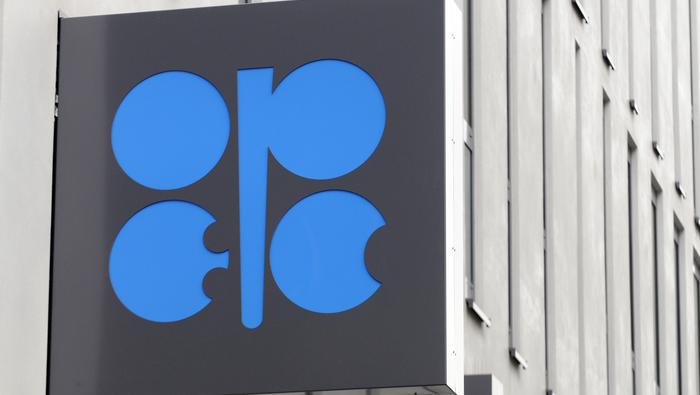Advertisement
Crude Oil Outlook: Volatile energy markets are expected as a result of delayed US oil inventory data and news from OPEC+ that the UAE will be permitted to boost its production.
Despite the tumultuous market action, the most recent bits of information are just noise; the bullish technical structure is still intact.
Crude oil prices have a mixed tilt, according to the IG Client Sentiment Index.
The Price of Crude Oil Is Fluctuating
Mid-week energy markets are volatile due to delayed US oil inventory data and news from OPEC+ that the UAE will be allowed to increase production. In the case of the latter, the incremental rise in oil output (about +600K barrels per day, according to reports) is insufficient to compensate for the chronic supply-demand imbalance that has characterized energy markets throughout 2021. According to a Bloomberg News survey, the delayed oil inventory data was finally revealed, and it indicated a draw of -7.9 million barrels, much over the prediction of a decline of -4 million barrels. As the US economy reopens, demand for energy continues to rise at a breakneck speed; gasoline prices have risen to their highest level since 2014. (albeit in part to seasonal factors as well; summer is the high season for gasoline demand). The Link Between Oil Volatility and Prices Shifts Crude oil prices, like most other asset classes, have a relationship with volatility, particularly those having real economic applications, such as other energy assets and soft and hard metals. Increased volatility is bad for crude oil, just like it is bad for bonds and stocks because it signals greater uncertainty about cash flows, dividends, and coupon payments, among other things. Increased financial market uncertainty as a result of rising macroeconomic tensions reduces theoretical energy demand; signals that the global economy is recovering from the coronavirus pandemic lessen uncertainty and, as a result, volatility. Questions about OPEC+, on the other hand, do not. Technical Analysis of OVX (Oil Volatility): Daily Price Chart (July 2020 to July 2021) (Graph 1) At the time of writing, oil volatility (as assessed by Cboe’s gold volatility ETF, OVX, which tracks 1-month implied volatility of oil as calculated from the USO option chain) was trading at 37.03. Oil volatility has remained stable at levels seen since early 2019, with signs that the link between crude oil and volatility is stabilizing. The 5-day correlation between OVX and crude oil prices is -0.67, while the 20-day correlation is -0.21, and the 5-day correlation was -0.84 and the 20-day correlation was -0.08. One week ago, on July 7, the 5-day correlation was -0.84 and the 20-day correlation was -0.08. Technical Analysis of Crude Oil Prices: Daily Chart (July 2020 to July 2021) (Graph 2) “In the context of the uptrend from the April 2020, November 2020, and May 2021 swing lows intact, the technical posture remains optimistic,” according to a crude oil price forecast released at the end of June. Since then, crude oil prices have risen to a new yearly high, surpassing the previous record of 76.90 set in 2018. However, not all is upbeat. Price activity was capped by an evening star candle cluster at the start of the month, and a three-candlestick topping pattern is proving to be valid. There is solid evidence to believe that near-term bullish momentum has been sapped, as the daily 8-EMA was recently violated on a closing basis for the first time since May 21. However, it is possible that there will not be a large price correction; rather, there may be consolidation as time passes. A lack of consensus in the daily EMA envelope, daily MACD, and daily Slow Stochastics suggests that more clarification is needed before determining a near-term directional bias. Technical Analysis of Crude Oil Prices: Weekly Chart (January 2008 to July 2021) (Graph 3) It was mentioned in the last crude oil price forecast that “While the 2018 high has yet to be hit, it stands to reason that a pullback on lower timeframes should be monitored for potential long-side entry (or re-entry) possibilities. There is no clear technical reason to be negative until the epidemic upswing breaks.” The previous peak from 2018 has now been surpassed. The longer-term technical posture remains bullish, with the swing lows in November 2020 and May 2021 intact. A sideways move towards the weekly 13-EMA (quarter moving average) is possible; the weekly 13-EMA aligns with the rising trendline that stretches back to the November 2020 low. CRUDE OIL PRICE FORECAST IN THE IG CLIENT SENTIMENT INDEX (July 14, 2021) (Figure 4) Crude oil from the United States: According to retail trader data, 47.52 percent of traders are net-long, with a short-to-long ratio of 1.10 to 1. The number of traders who are net-long is down 0.41 percent from yesterday and down 18.76 percent from last week, while the number of traders who are net-short is down 1.98 percent from yesterday and down 5.59 percent from last week. We usually take the opposite side of popular sentiment, and the fact that traders are net-short on Oil – US Crude means that prices will continue to rise. Positioning is net-shorter today than yesterday, but net-shorter than last week. We have a mixed Oil – US Crude trading bias as a result of current sentiment and recent movements. —- Christopher Vecchio, CFA, Senior Currency Strategist wrote this article./n
Read More




